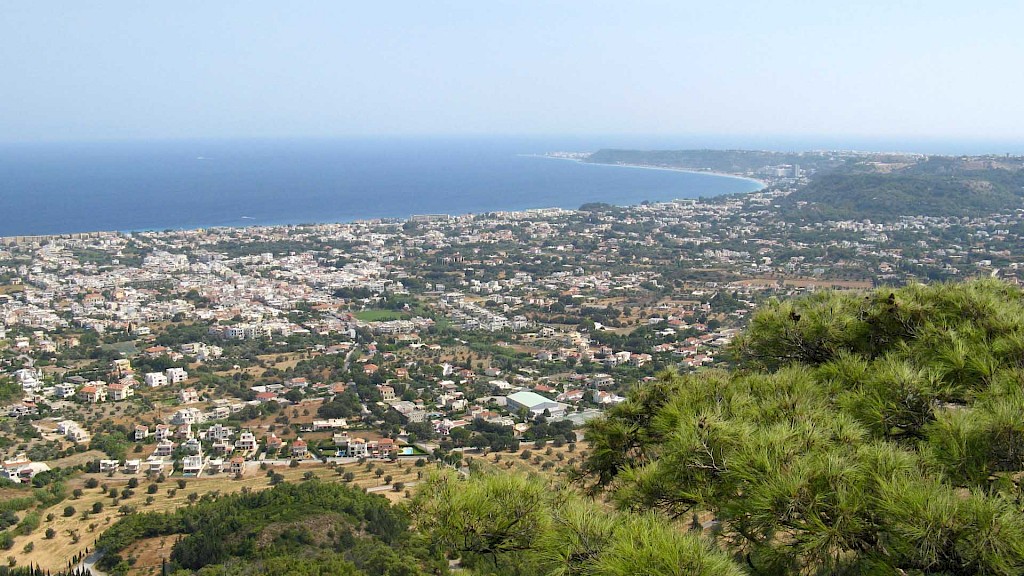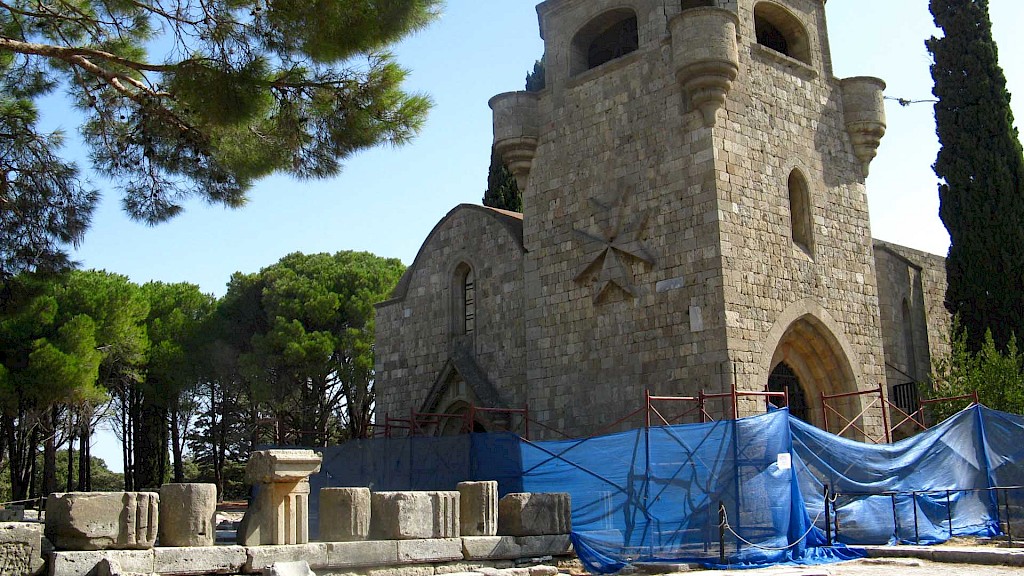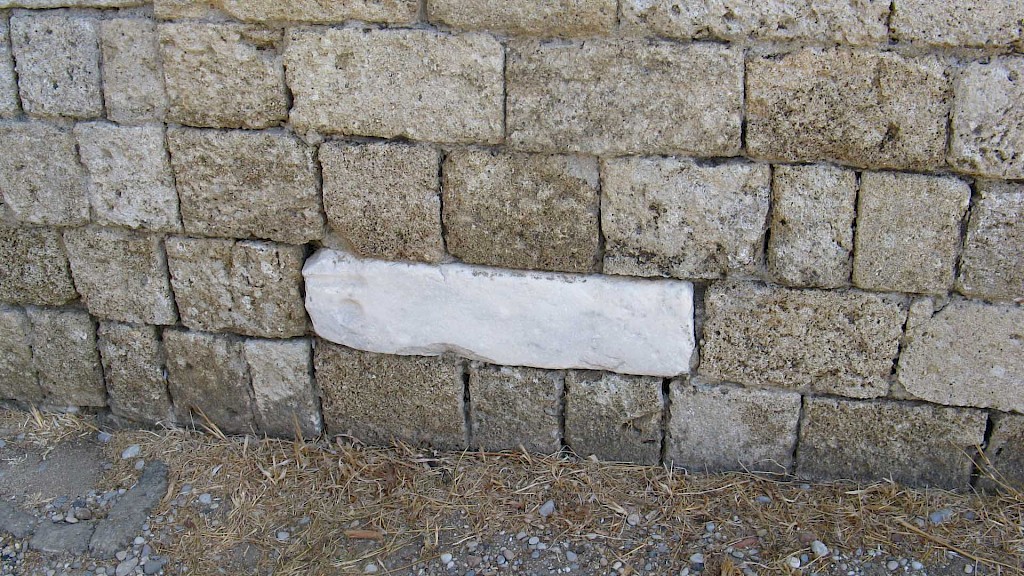The island of Rhodes is a beautiful holiday destination, especially if you’re interested in history. Located a little east from the city of Rhodes is Ialysos (often Latinized as Ialysus).
In ancient times, Ialysus was a major settlement on the island, alongside Camirus and Lindus. These three cities are named specifically in the Homeric Iliad as the places where the “Rhodians” lived (Il. 2.654–56).
When the city of Rhodes was founded in 408/407 BC (Diod. 13.75.1), inhabitants from these three cities flocked to the new settlement. Nevertheless, the old cities continued to exist (cf. Xen. Hell. 4.8.25), and even appear to have thrived.
The hill of Philerimos
The acropolis of Ialysos – the hill of Philerimos – features structures and remains of structures from different periods of Greek history. As you walk up the acropolis, you’re first struck by the many peacocks that roam free here, and will soon see a medieval bell tower. With its awe-inspiring view across a large swathe of the island and the nearby sea, it’s perhaps no wonder that people felt the need to construct religious buildings here.
Close to the extant Christian structures are the remains of a temple of Athena that date back to the third and second centuries BC. This temple was built on top of an older temple, which based on the terracotta antefixes found here, can be dated to the fifth century BC. On the west side of the remains of the temple a depository has been found that features pottery and votive offerings that are even earlier in date: they range from between the ninth and fifth centuries BC.
The basic structure of the temple can still be seen: it consisted of a portico with four or six columns. Inside the cella (the temple’s main room) the base has been unearthed upon which the cult statue of the goddess once stood. Various elements from this Doric temple, like column drums, have been collected and placed around the remains of the structure for visitors to examine. A Christian three-aisled basilica once covered the ancient temple, of which little remains except the baptistry, dated to the fifth and sixth centuries AD.
Among the other ancient remains is a Doric fountain house of the fourth century BC. It featured a cistern fed by two tunnels that brought water from the top of the hill. Water was fed via lion-head spouts from the closed cistern into an open tank. The fountain house was roofed, with six Doric columns supporting the fountain house at the front and allowing easy access to the water.
Other structures date mostly from the medieval era. Notable among them is a church of the fourteenth century AD, with a vaulted roof and two hexagonal chapels, and a medieval monastery that was restored during the Italian occupation earlier in the twentieth century. On the east side of the hill are Byzantine fortifications. Located underground is the single-cell chapel of Ayios Georgios Chostos, dated to the fifteenth century, with walls decorated with frescoes.
If you happen to go to Rhodes CIty, it’s definitely worth it to rent a car for a day or so and visit some of the nearby archaeological sites. A trip to Ialysos should definitely be on your to-do list!
Gallery

View from the acropolis
The view from the acropolis is nothing short of breathtaking. You can see the modern town below, as well as a large stretch of the island’s coast line.

Christian structures
As you climb up the acropolis, you’ll seen run into the medieval structures, including the tower here. When we visited in 2013, there were restoration works going on, and you couldn’t enter directly because of the dangerous conditions that the bellfry was in.

Baptistry
This cruciform structure, embedded into the ground, is an early Christian baptistry, dated to the fifth or sixth century AD. It’s all that remains of the basilica that was constructed directly on top of the ancient temple of Athena.

Re-use of ancient stones
Everywhere on the acropolis you can find these bright marble stones lodged into later masonry. A considerable number of these, maybe all, were taken from ancient structures, most notably, of course, the temple of Athena.

A corridor
A corridor in the monastery on the acropolis. The monestary was heavily restored by the Italians when they occupied the island. Note the beautiful Byzantine frescoes.

The temple to Athena
Remains of the temple of Athena, dated to the third and second centuries BC. It was built on top of an earlier temple that dates to the fifth century BC, and finds of votive offerings and pottery make clear that the site had a religious significance that goes back to at least the ninth century BC. Athena was here worshipped in her guise as protectress of the city (Athena Polias), and there’s evidence that Zeus Polieus was also worshipped on the acropolis.

Chapel of Aiyos Georgos Chostos
Located underground is this beautiful little chapel dedicated to Saint George “Chostos”. It dates to the fifteenth century. Its walls are covered from top to bottom with frescoes.
